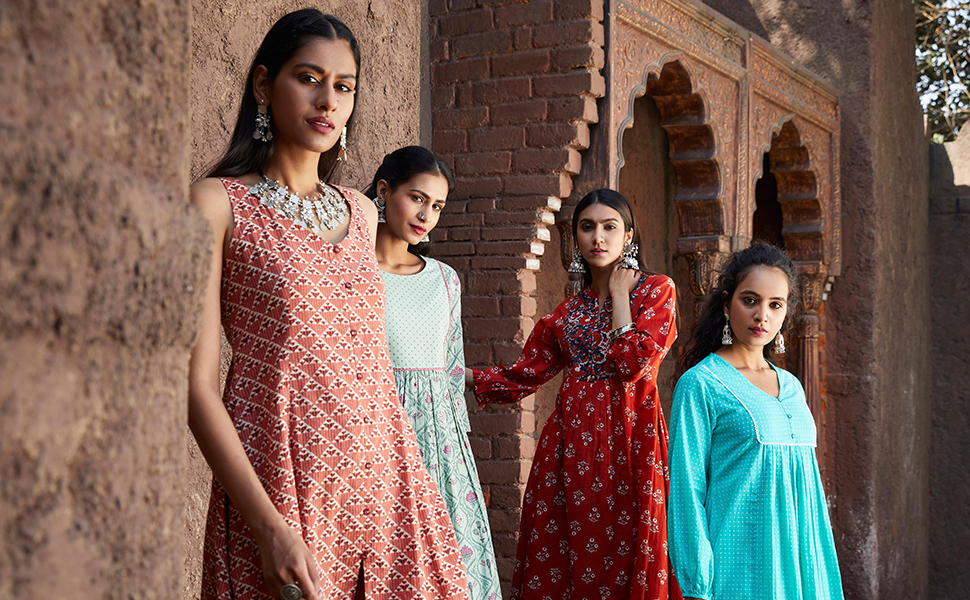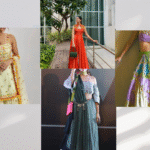Ethnic suits are a timeless fashion staple for Indian women, offering elegance and grace for every occasion. However, the key to looking your best lies in choosing a suit that complements your body type. The right fabric, and design can enhance your features, making you feel confident and stylish. This guide will help you pick the perfect ethnic suit that flatters your unique shape.
Understanding Different Body Types
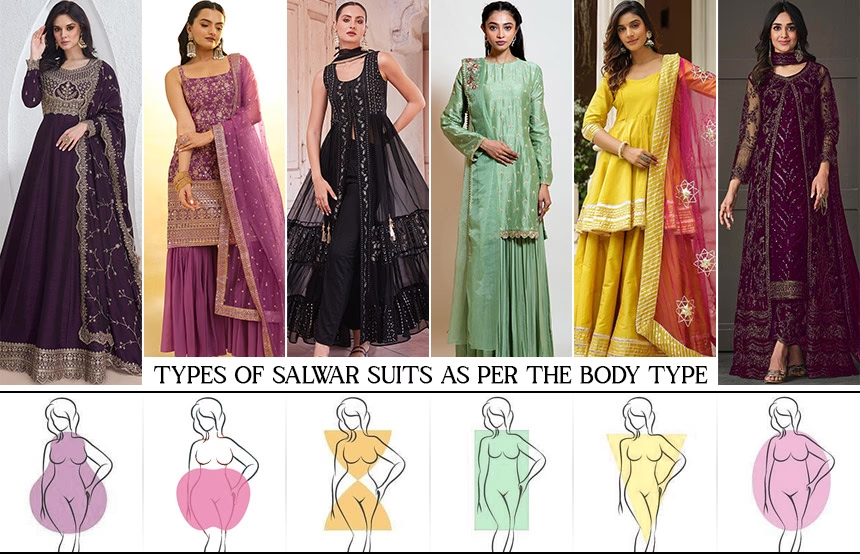
Before choosing an ethnic suit, it’s essential to identify your body shape. Here are some common body types:
- Pear-Shaped: Narrow upper body with wider hips
- Apple-Shaped: Heavier upper body with a rounder midsection
- Hourglass: Well-defined waist with balanced bust and hips
- Rectangle: Proportionate bust, waist, and hips with a straight frame
- Inverted Triangle: Broader shoulders with a narrower lower body
Now, let’s explore which ethnic suits work best for each body type.
Best Ethnic Suits for Different Body Types
Pear-Shaped Body
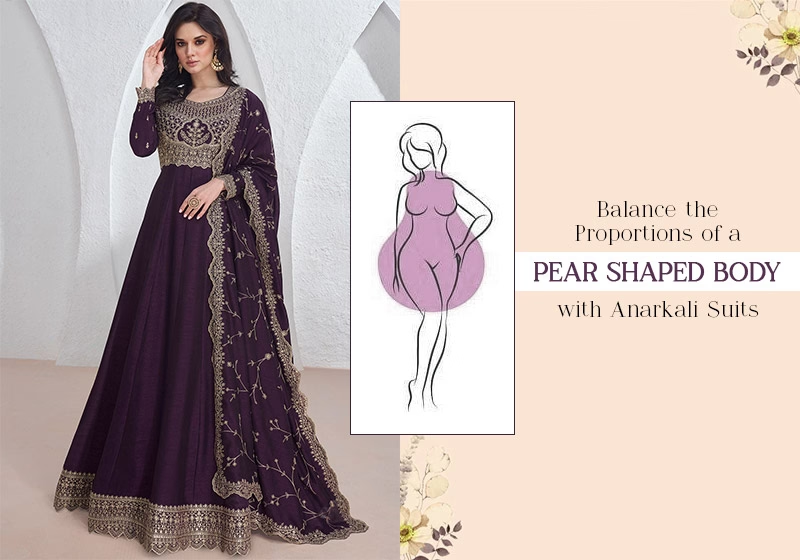
where the lower half is broader than the upper half, the key is to balance proportions. Anarkali suits work wonders by flowing gracefully over the hips, creating an elongated appearance. A-line kurtis also complement this body type by drawing attention upwards while allowing a comfortable fit below. Straight-cut suits are another great option, as they create a leaner, more streamlined silhouette. Choosing lighter colors or detailed work on the upper part of the suit helps shift the focus away from the hip area, creating a well-balanced look.
Avoid: Heavy embroidery or bold prints around the hip area, as they can draw unnecessary attention.
Apple-Shaped Body
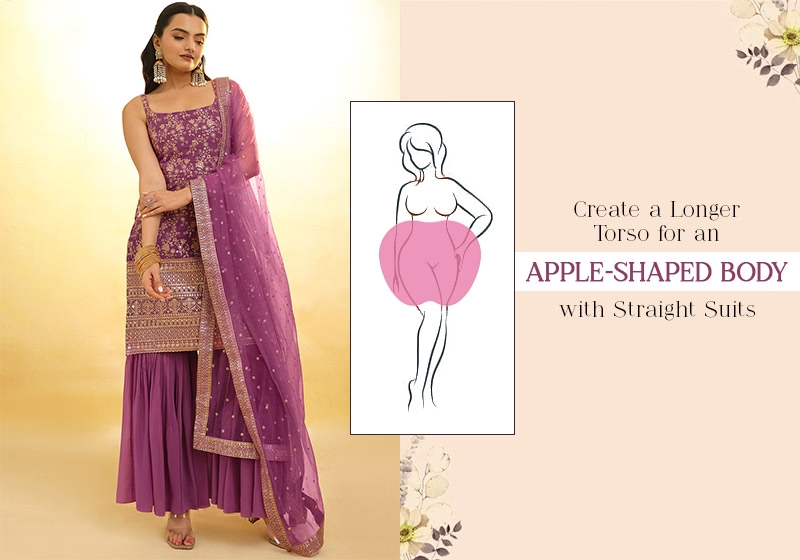
where the weight is more concentrated around the midsection, empire waist suits and straight-cut kurtis are ideal. These styles lengthen, preventing attention from settling on the waistline. Suits with structured yet flowy silhouettes help define the figure while offering comfort. Soft, breathable fabrics that drape effortlessly, such as chiffon and georgette, enhance the overall look without clinging to the body. Open-front jacket-style suits add an extra definition layer while maintaining an elegant and flattering appeal.
Avoid: Body-hugging fabrics or suits with heavy embellishments around the tummy area.
Hourglass Body
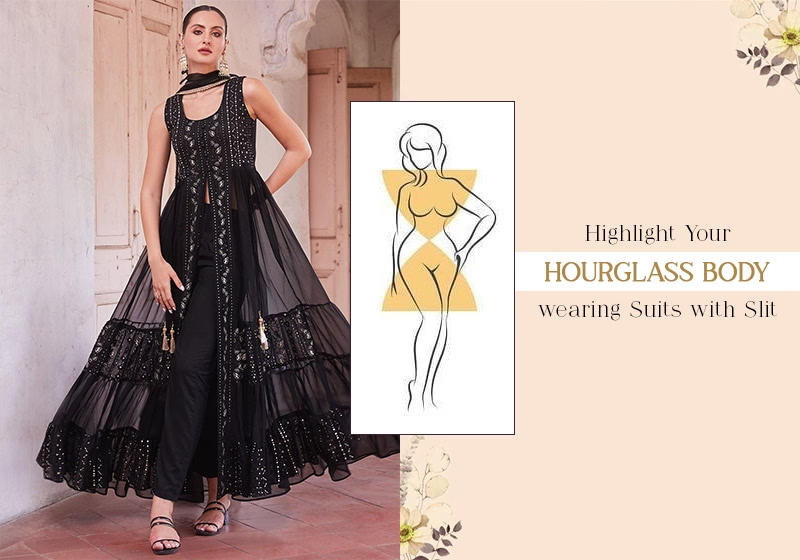
Women with an Hourglass body shape characterized by a well-defined waist and proportional bust and hips, can embrace fitted Anarkali suits, peplum-style kurtis, and well-structured salwar suits. Outfits that highlight the waist without adding bulk to the upper or lower body enhance natural curves beautifully. Fabrics with a slight stretch or a tailored fit work best to accentuate the shape. Avoiding overly loose or boxy designs ensures that the silhouette remains flattering and defined.
Avoid: Oversized or shapeless kurtis that hide your natural curves.
Rectangle Body Shape
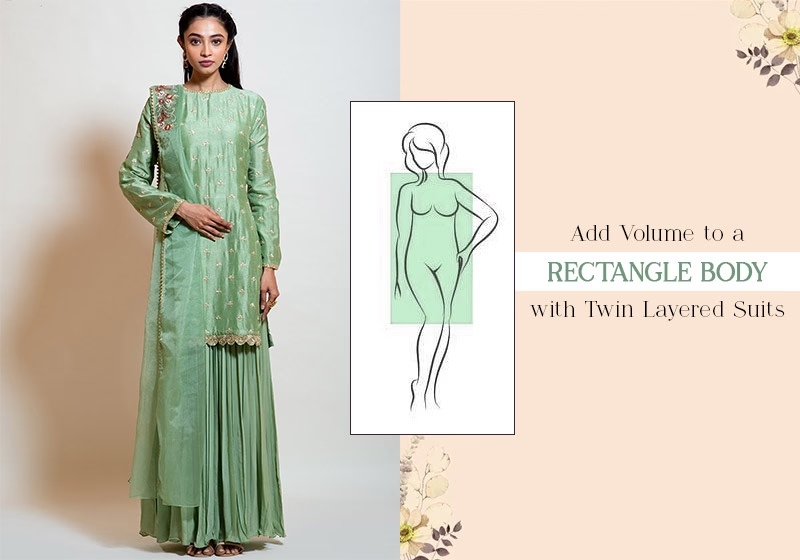
where the bust, waist, and hips are relatively similar in width, benefits from designs that create the illusion of curves. Angrakha kurtis with overlapping panels or pleated Anarkalis add volume and structure, defining the waist naturally. Layered and flared suits create depth, enhancing the body’s dimensions. Instead of straight, shapeless suits, choosing styles with subtle draping or detailing at the waist can add movement and femininity to the overall look.
Avoid: Boxy or straight kurtis that don’t add structure to your look.
Inverted Triangle Body
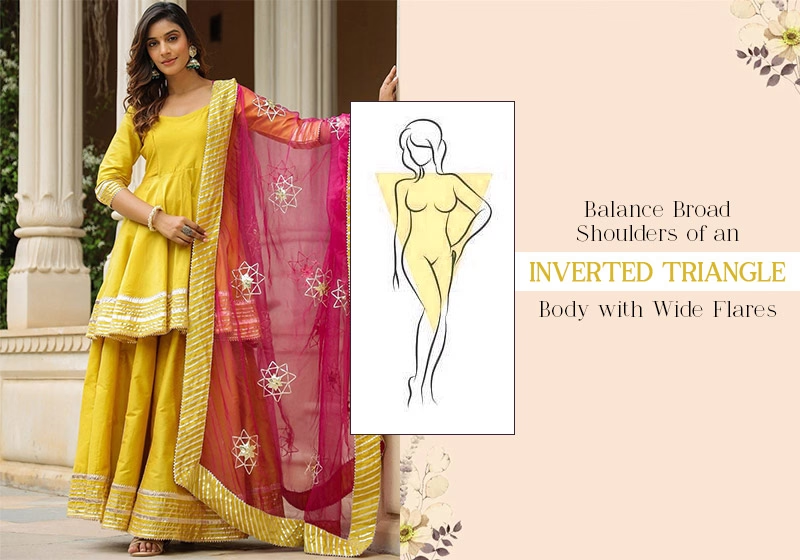
where the shoulders are broader than the lower body, the goal is to soften the upper frame while adding volume below. Flared skirt suits, shararas, and salwar suits with Patiala bottoms create balance by drawing attention to the lower half. Avoiding heavily padded shoulders or excessive embellishments around the neckline helps keep the look refined and well-proportioned. Paneled kurtis that flare at the bottom offer a soft, flowing effect, which works beautifully for this body type.
Avoid: Heavy embellishments or padded shoulders that further emphasize the upper body.

